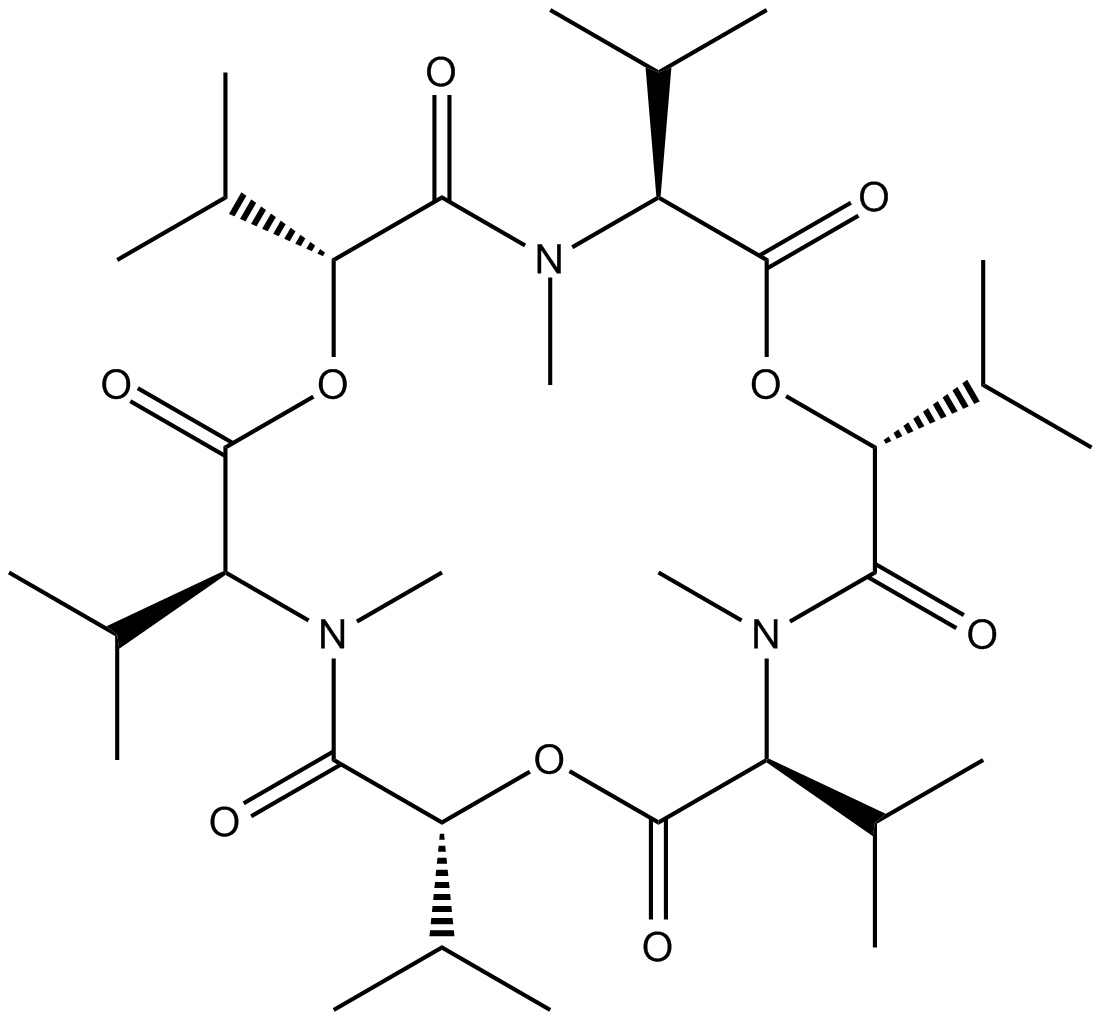Enniatin B (Synonyms: Antibiotic 86/88) |
| Catalog No.GC17693 |
ionophore with some capacity to facilitate import of K+ and Na+ across membranes
Products are for research use only. Not for human use. We do not sell to patients.

Cas No.: 917-13-5
Sample solution is provided at 25 µL, 10mM.
Enniatin B is an ionophore antibiotic.
Enniatins are one of the cyclohexadepsipeptides produced by various species of the genus Fusarium, and are reported to have antibiotic, ionophoric, and in-vitro hypolipidaemic activities.
In vitro: A non-toxic concentration of enniatin B could strongly inhibit a Pdr5p-mediated efflux of cycloheximide or cerulenin in Pdr5p-overexpressing cells. The mode of Pdr5p inhibition caused by enniatin B was competitive against FK506. However, enniatin B could not inhibit the function of Snq2p, a homologue of Pdr5p [1]. Another study showed that enniatin B was a relatively poor ionophore that could facilitate import of K+ and Na+ across membranes [2]. It was also found that like other enniatins, enniatin B was able to inhibit acyl-CoA: cholesterol acyltransferase [3].
In vivo: After oral administration to mice, no toxicological signs or pathological changes were observed. Moreover, enniatin B was found in all tissues and serum but not in urine, and the highest amounts was measured in liver and fat. Three phase I metabolites of enniatin B were found in liver and colon, with dioxygenated-enniatin B being most prominent [4].
Clinical trial: Up to now, enniatin B is still in the preclinical development stage.
References:
[1] K. Hiraga, S. Yamamoto, H. Fukuda, et al. Enniatin has a new function as an inhibitor of Pdr5p, one of the ABC transporters in Saccharomyces cerevisiae. Biochemical and Biophysical Research Communications 328(4), 1119-1125 (2005).
[2] M. R. Kamyar, P. Rawnduzi, C. R. Studenik, et al. Investigation of the electrophysiological properties of enniatins. Archives of Biochemistry and Biophysics429(2), 215-223 (2004).
[3] Tomoda, X. H. Huang, J. Cao, et al. Inhibition of acyl-CoA: Cholesterol acyltransferase activity by cyclodepsipeptide antibiotics. J.Antibiot.(Tokyo) 45(10),1626-1632 (1992).
[4] Rodríguez-Carrasco Y et al. Mouse tissue distribution and persistence of the food-born fusariotoxins Enniatin B and Beauvericin. Toxicol Lett. 2016 Apr 15;247:35-44.
Average Rating: 5 (Based on Reviews and 23 reference(s) in Google Scholar.)
GLPBIO products are for RESEARCH USE ONLY. Please make sure your review or question is research based.
Required fields are marked with *




















